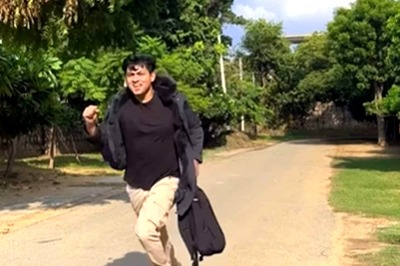
views
Deep below Jakarta's traffic-choked streets, a warren of transit tunnels could prove the key to easing the city's crippling gridlock.
Every day millions of commuters make the tortuous slog to work in slow moving cars and on motorbikes in the oppressively hot, smog-choked Indonesian capital.
But hopes are high that the completion of an underground rail network could provide a solution to the worsening traffic problem in one of Asia's largest cities.
Construction of the Mass Rapid Transit (MRT) system is approaching its final phase, with building set to finish next year and commuters expected to be able to use the service from March 2019.
Beneath the iconic Hotel Indonesia roundabout in central Jakarta, workers are toiling around the clock to lay tracks in the cavernous concrete tunnels that will eventually whoosh residents around the city.
Problems with land acquisition have delayed the project, but it will be close to completion by year's end, MRT Jakarta, the company appointed to build and operate the railway, said on Thursday.
"Despite the challenges the progress is still on track," William Sabandar, the company's president director said.
Jakarta's massive traffic problems, combined with decrepit roads and inefficient public transport are often cited as obstacles to growth and investment.
The rail system will not be finished before the Asian Games in August next year, but Sabandar said it would help reduce congestion.
"If we have 100,000 commuters everyday, assuming there are two people in each car, we will be able to prevent 50,000 cars from entering the business area, it will be very significant," Sabandar said.
The first phase of the project, which commenced in 2013, will connect a 16-kilometre route between Lebak Bulus in southern Jakarta to the Hotel Indonesia roundabout in the city's centre.
Once operational, it is expected to transport around 173,000 passengers per day.
The railway will eventually stretch more than 110 kilometres (70 miles) and include 13 stations, with seven elevated and six underground.
The metro system will be integrated with the city's existing commuter train line and busway, providing a much needed alternative to the fleet of smog-belching and ageing buses currently in place.



















Comments
0 comment